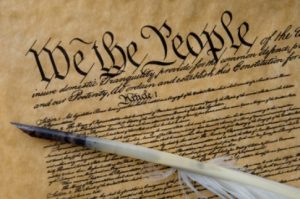Moving forward, the case serves as a reminder that constitutional rights cannot be sacrificed for prosecutorial convenience.
The Eastern District of New York’s (EDNY) prosecution of OneTaste co-founder Nicole Daedone and former sales leader Rachel Cherwitz has become a focal point for judicial scrutiny of witness anonymity and prosecutorial conduct. As the defense challenges the use of anonymous witnesses and highlights concerns of FBI misconduct, the case underscores critical tensions between prosecutorial discretion and constitutional rights. This article analyzes the legal standards for anonymity, the implications of the court’s denial, and the broader consequences for justice system integrity.
I. Introduction
The EDNY’s prosecution of wellness company OneTaste has sparked significant controversy, not only due to the underlying conspiracy allegations but also the government’s attempt to conceal the identities of key witnesses. This effort, recently rejected by Judge Diane Gujarati, has reignited debate over the balance between witness protection and a defendant’s Sixth Amendment right to confront their accusers.
This article explores the procedural issues surrounding witness anonymity in the OneTaste case, emphasizing the constitutional protections against secret testimony and the broader implications for due process, particularly in light of mounting defense claims of evidence manipulation and prosecutorial overreach.
II. Factual Background
The OneTaste prosecution centers on allegations of conspiracy against co-founder Nicole Daedone and former sales leader Rachel Cherwitz, originally scheduled for trial on January 13, 2025. However, the trial was postponed until May due to procedural complications, including conflicts of interest involving defense counsel Arthur Aidala’s rumored nomination for U.S. Attorney for the EDNY.
Central to the dispute is the government’s request for witness anonymity. Prosecutors argued that concealing the identities of ten witnesses was necessary for safety reasons. Defense counsel Jennifer Bonjean opposed the motion, stating that “It is far easier to come to court and lie anonymously than it is to stand on testimony with one’s true name.” Judge Gujarati sided with the defense, emphasizing the importance of open confrontation in criminal trials.
Simultaneously, the defense has accused FBI Special Agent Elliot McGinnis of serious misconduct, including coercing witnesses, manipulating evidence, and interfering with civil litigation. The defense alleges McGinnis instructed witnesses to destroy evidence and used private channels to communicate with witnesses, bypassing standard evidentiary preservation protocols.
III. Legal Framework: Witness Anonymity and the Sixth Amendment
The Sixth Amendment guarantees a defendant the right to confront witnesses against them, a principle affirmed in Crawford v. Washington, 541 U.S. 36 (2004). The confrontation clause ensures cross-examination as a critical tool to challenge the credibility and reliability of testimony in criminal trials.
However, in rare cases, courts have permitted witness anonymity, balancing:
The severity of threats posed to the witness.
The necessity of the testimony to the prosecution’s case.
The degree of prejudice imposed on the defense.
The prosecution in the OneTaste case failed to meet this standard, offering no substantial evidence of direct threats to the witnesses. Judge Gujarati, emphasizing the speculative nature of the threats, determined that granting anonymity would unreasonably impair the defense’s ability to cross-examine witnesses effectively.
IV. Key Issues in the OneTaste Case
A. Judicial Scrutiny and Witness Credibility
The defense’s challenge to anonymous testimony coincides with broader concerns about the credibility of government evidence. Central to the case are handwritten and typewritten journals allegedly authored by key government witness Ayries Blanck. Defense forensic experts have presented metadata evidence indicating that the journals were created years after the events described, contradicting the government’s claim they were contemporaneous records.
The defense has argued that the journals were fabricated or heavily edited for a 2022 Netflix documentary, further raising questions about the reliability of the government’s case. If the authenticity of these journals is compromised, anonymous testimony could prevent effective cross-examination on a foundational piece of evidence.
B. Prosecutorial Misconduct Allegations
Defense filings have spotlighted serious allegations of misconduct by FBI Special Agent Elliot McGinnis, including:
Instructing witnesses to delete or conceal evidence.
Using personal email accounts and “Confidential Mode” features to bypass standard evidence preservation.
Misrepresenting the origins and chain of custody of key evidence.
Despite these allegations, the government has resisted calls for an evidentiary hearing on McGinnis’s conduct and has excluded him from its witness list, raising further concerns about the transparency of the investigation.
V. Comparative Case Law on Anonymity in Criminal Trials
The EDNY’s approach in the OneTaste case mirrors the controversial prosecution of U.S. v. Mackey, where novel applications of federal conspiracy statutes raised concerns of prosecutorial overreach. Both cases involved single-count conspiracy charges and minimal substantive criminal allegations, relying heavily on media narratives rather than traditional evidentiary standards.
Historically, witness anonymity has been granted in cases involving organized crime or terrorism, where credible threats were clearly established. For example, in U.S. v. Al Qaeda Operatives, anonymity was permitted after demonstrable threats to witnesses. However, in the OneTaste case, the government has presented no evidence of comparable threats, making the request legally and constitutionally questionable.
VI. Broader Implications for Prosecutorial Accountability
The procedural challenges in the OneTaste case highlight broader concerns about prosecutorial practices in high-profile cases:
Erosion of the Confrontation Clause: Unsubstantiated claims of danger cannot justify the suspension of constitutional rights.

Lack of Transparency: Allegations of FBI misconduct and fabricated evidence demand heightened judicial scrutiny, not reduced witness accountability.
Expansion of Prosecutorial Discretion: The reliance on media narratives and questionable evidence raises concerns about the expansion of conspiracy charges without substantive criminal elements.
VII. Policy Recommendations
To address the concerns raised in the OneTaste prosecution, the following reforms are recommended:
1. Stricter Evidentiary Standards for Anonymity: Courts should require concrete evidence of threats before granting witness anonymity.
2. Enhanced Oversight of Federal Agents: Allegations of misconduct by law enforcement officials like McGinnis warrant independent review and possible disciplinary action.
3. Mandatory Evidentiary Hearings: When serious allegations of evidence tampering arise, courts should be required to conduct full evidentiary hearings before proceeding to trial.
4. Increased Transparency in Media-Influenced Cases: Prosecutors should be required to disclose any collaboration with media outlets to ensure evidence integrity.
VIII. Conclusion
The OneTaste prosecution stands as a critical test of constitutional protections against secret testimony and prosecutorial overreach. Judge Gujarati’s decision to deny witness anonymity underscores the importance of safeguarding the right to confrontation, especially in cases where the integrity of the evidence is in question.
Moving forward, the case serves as a reminder that constitutional rights cannot be sacrificed for prosecutorial convenience. A more transparent and accountable approach to witness management is essential to preserving the fairness and legitimacy of the criminal justice system.


Join the conversation!